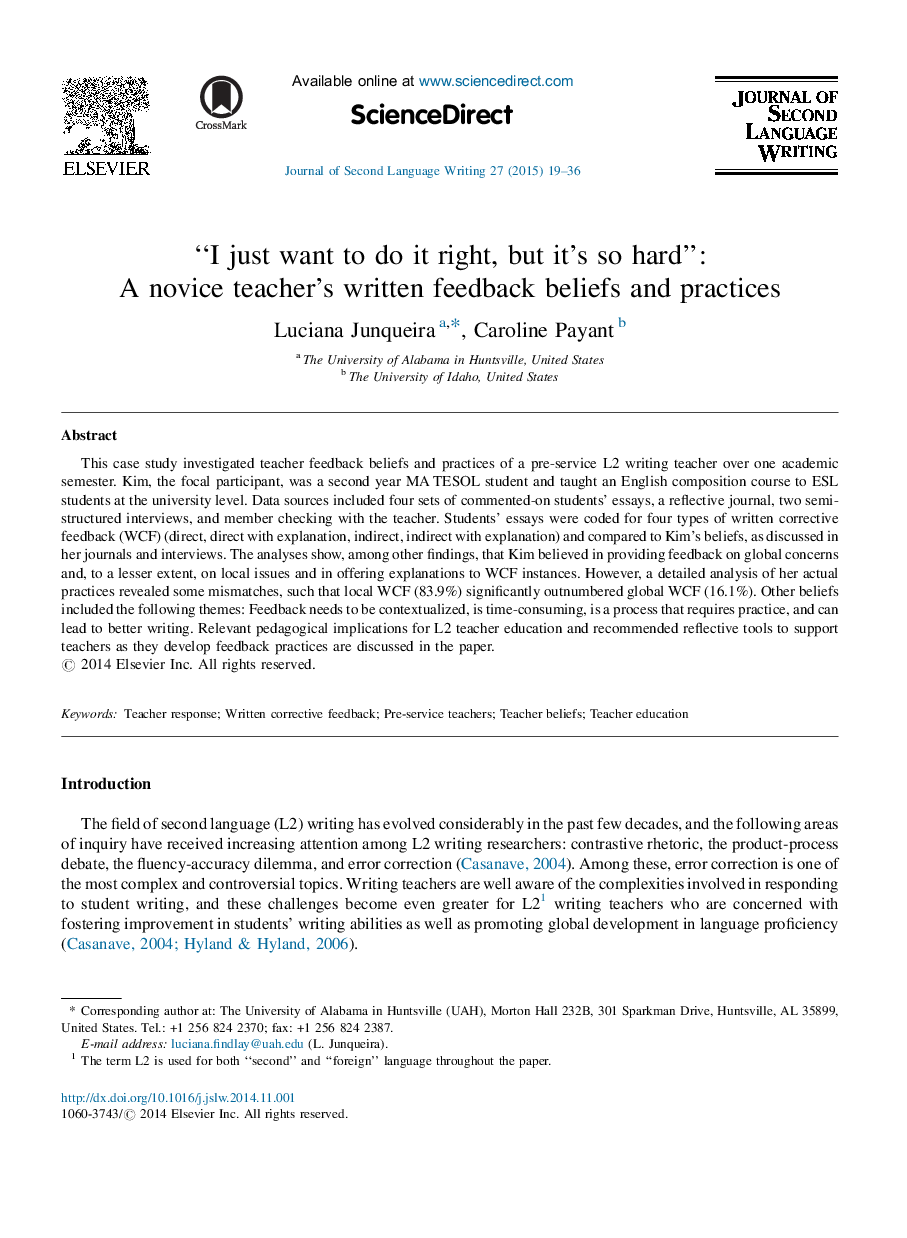| Article ID | Journal | Published Year | Pages | File Type |
|---|---|---|---|---|
| 364046 | Journal of Second Language Writing | 2015 | 18 Pages |
•Written feedback beliefs and practices of a novice teacher were analyzed.•Teacher held a complex set of beliefs regarding what to address and how to offer feedback.•Teacher believed in providing global feedback and to a lesser extent local feedback.•Teacher offered significantly more local WCF (83.9%) than global (16.1%) across essays.•Practical constraints and novice status seem to have impacted her practices the most.
This case study investigated teacher feedback beliefs and practices of a pre-service L2 writing teacher over one academic semester. Kim, the focal participant, was a second year MA TESOL student and taught an English composition course to ESL students at the university level. Data sources included four sets of commented-on students’ essays, a reflective journal, two semi-structured interviews, and member checking with the teacher. Students’ essays were coded for four types of written corrective feedback (WCF) (direct, direct with explanation, indirect, indirect with explanation) and compared to Kim's beliefs, as discussed in her journals and interviews. The analyses show, among other findings, that Kim believed in providing feedback on global concerns and, to a lesser extent, on local issues and in offering explanations to WCF instances. However, a detailed analysis of her actual practices revealed some mismatches, such that local WCF (83.9%) significantly outnumbered global WCF (16.1%). Other beliefs included the following themes: Feedback needs to be contextualized, is time-consuming, is a process that requires practice, and can lead to better writing. Relevant pedagogical implications for L2 teacher education and recommended reflective tools to support teachers as they develop feedback practices are discussed in the paper.
